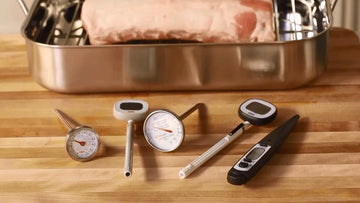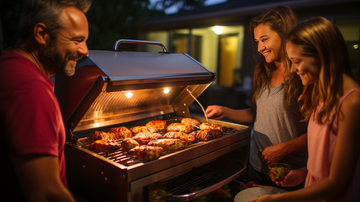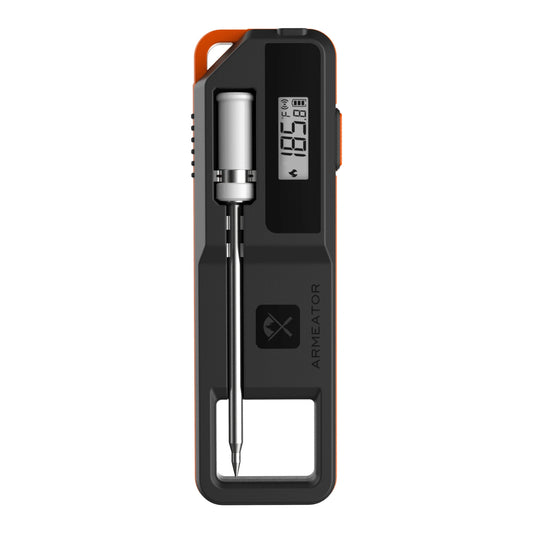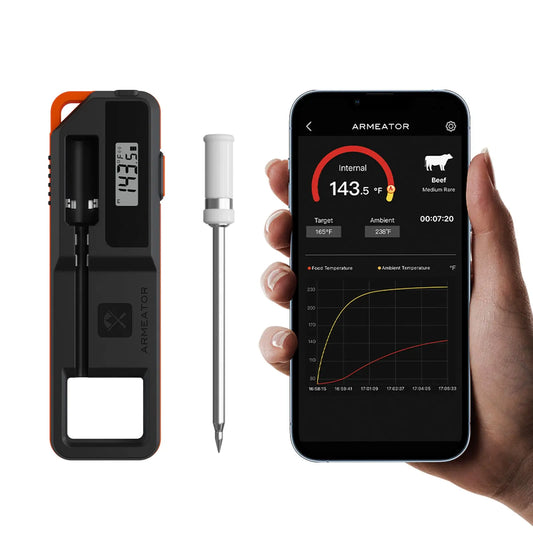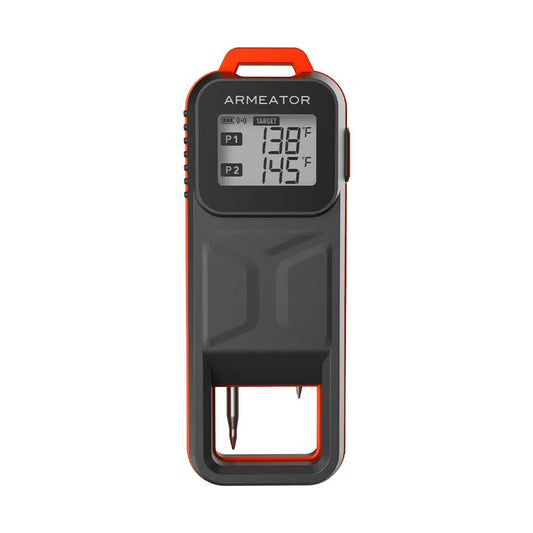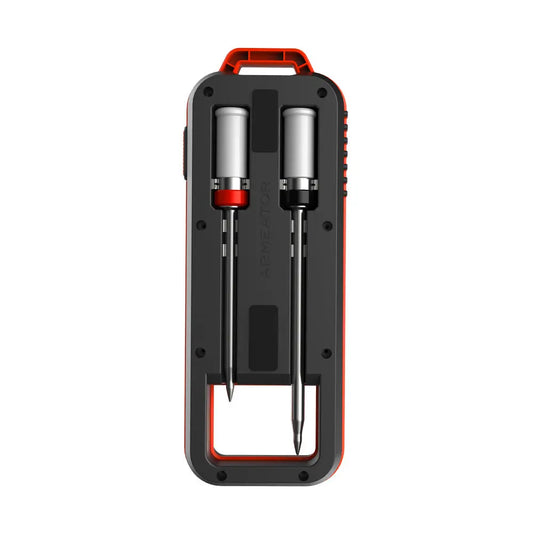When it comes to grilling, using a thermometer can help us ensure the doneness of food and food safety. Whether you're an experienced culinary master or a novice, one key factor in achieving the perfect grill is monitoring the temperature of the meat. This is where a grill thermometer comes into play.
If you're considering getting one for your kitchen, take a look at the information we've compiled for you. At the end of the article, I also helped organize a table for everyone, making it convenient for them to refer to.
Instant-Read Thermometer:
An instant-read thermometer provides you with a reading within approximately 10 seconds. It is a must-have tool in the kitchen and works well with both thick and thin foods. After inserting it into the food, you only need to wait a few seconds to get the reading. This type of thermometer is not only suitable for grilling, but some thermometers can withstand temperature ranges from -58 to 572 degrees, which means you can easily go from freezing to deep frying.
However, it cannot be left in the food. Suppose you are a cooking novice, you can only repeatedly lift the grill lid to measure whether the meat has reached the desired temperature using the thermometer.

Wireless Meat Thermometer:
Wireless meat thermometer, also known as smart thermometers or wireless Bluetooth thermometers, have become popular modern cooking tools in recent years. Through wireless connection, they allow you to monitor the temperature of the food you're cooking from a distance away from the oven or grill.
They are made of stainless steel and ceramics, so you can safely leave them in the oven, and each brand has its own app. Once the thermometer is connected to your phone via Bluetooth, you can set your desired temperature on the APP, and when the meat reaches the target temperature, your phone will ring to remind you to remove the meat from the grill. You don't have to keep an eye on the food all the time but can continue doing other things while hearing the reminder to ensure the food doesn't overcook or undercook.
And the smart meat thermometer doesn't have to be expensive, with the ARMEATOR ONE now available less than $60 with a discount code. If you're unsure whether a wireless meat thermometer is worth having, you can read this article.

Oven Probe Cord Thermometers:
Oven probe food thermometers allow the chef to check the temperature of food in the oven without opening the oven door. These thermometers feature a leave-in probe that can be inserted into large cuts of meat during cooking. The probe is inserted into the food, and the wire extends from the oven to the base unit. The thermometer is programmed for the desired temperature and beeps when the temperature is reached.
You can leave them in the oven while cooking without any problems. However, due to the relatively long cord, they may get tangled or entangled with other kitchen tools during use, requiring extra time and effort to untangle. Also, over time, the cable may short-circuit and wear out from continuous exposure to high temperatures, although it takes a very, very long time based on experience.
Additionally, some of these types of thermometers are more expensive due to a range of settings and features.

Thermometer Fork Combination:
The thermometer fork combination is a kitchen tool that combines a thermometer and a fork. It offers the convenience of both food cooking and temperature measurement. It functions as both a fork and a thermometer, shaped and designed like a fork, making it easy to insert into food, flip food, or check the food's doneness.
It typically provides a reading within 10 seconds and has a 16-inch long cord, keeping your hands away from the heat while allowing for deep penetration into the food. Due to its design combining a thermometer and fork, it may sacrifice some temperature measurement accuracy compared to independently designed thermometers.

Dial Meat Thermometer:
Dial meat thermometers, also known as bimetallic thermometers, are made with a metal probe and a glass-enclosed dial, usually set vertically at the top. These thermometers are made from heat-resistant materials and can withstand high-temperature environments without damage or deformation.
Hence, you can leave it in the oven while cooking, allowing you to monitor the process. However, the metal rod's thermal conductivity may lead to inaccurate high readings. For novices, it might be challenging to read the temperature data on the dial.

Pop-Up Timers:
These thermometers are usually included with store-bought turkeys. In a standard pop-up turkey timer, a red plastic indicator pops up when the turkey reaches approximately 165 degrees Fahrenheit (73 degrees Celsius). However, these timers are highly unreliable as they may sometimes pop up before the bird is fully cooked.

When purchasing a thermometer, choose a style that suits your personal needs and cooking habits. Whether it's the instant-read thermometer, thermocouple thermometer, thermometer fork combination, or wireless meat thermometer, each has its unique advantages and suitable scenarios. Additionally, reasonable pricing and high quality are important factors to consider, ensuring you get reliable temperature measurements and a satisfying user experience.
| Description | Advantages | Disadvantages | |
|---|---|---|---|
| Instant-Read Thermometer | Usually uses a thermistor or thermocouple as a sensor to measure temperature. The signal is converted into digital temperature readings through a circuit. |
|
|
| Wireless Meat Thermometer | The metal probe part contains the temperature measurement component, and the ceramic handle contains an antenna that transmits signals to the relay. |
|
Not suitable for thin meats |
| Oven Probe Cord Thermometers | The measurement signal of the probe is transmitted to the display through a wire connected to the inserted probe. |
|
The connecting wire is relatively long and not easy to store. |
| Thermometer Fork Combination | Combines thermometer and fork, the thermometer component usually uses a thermistor or thermocouple. |
|
|
| Dial Meat Thermometer | Uses a thermal element (such as a thermal spiral) or thermal expansion principle. |
|
|
| Pop-Up Timers | When the temperature reaches a certain level, the bottom soft metal melts, releasing a red spring. | Easy to use, inexpensive. | The soft metal may melt prematurely, resulting in undercooked meat. |

